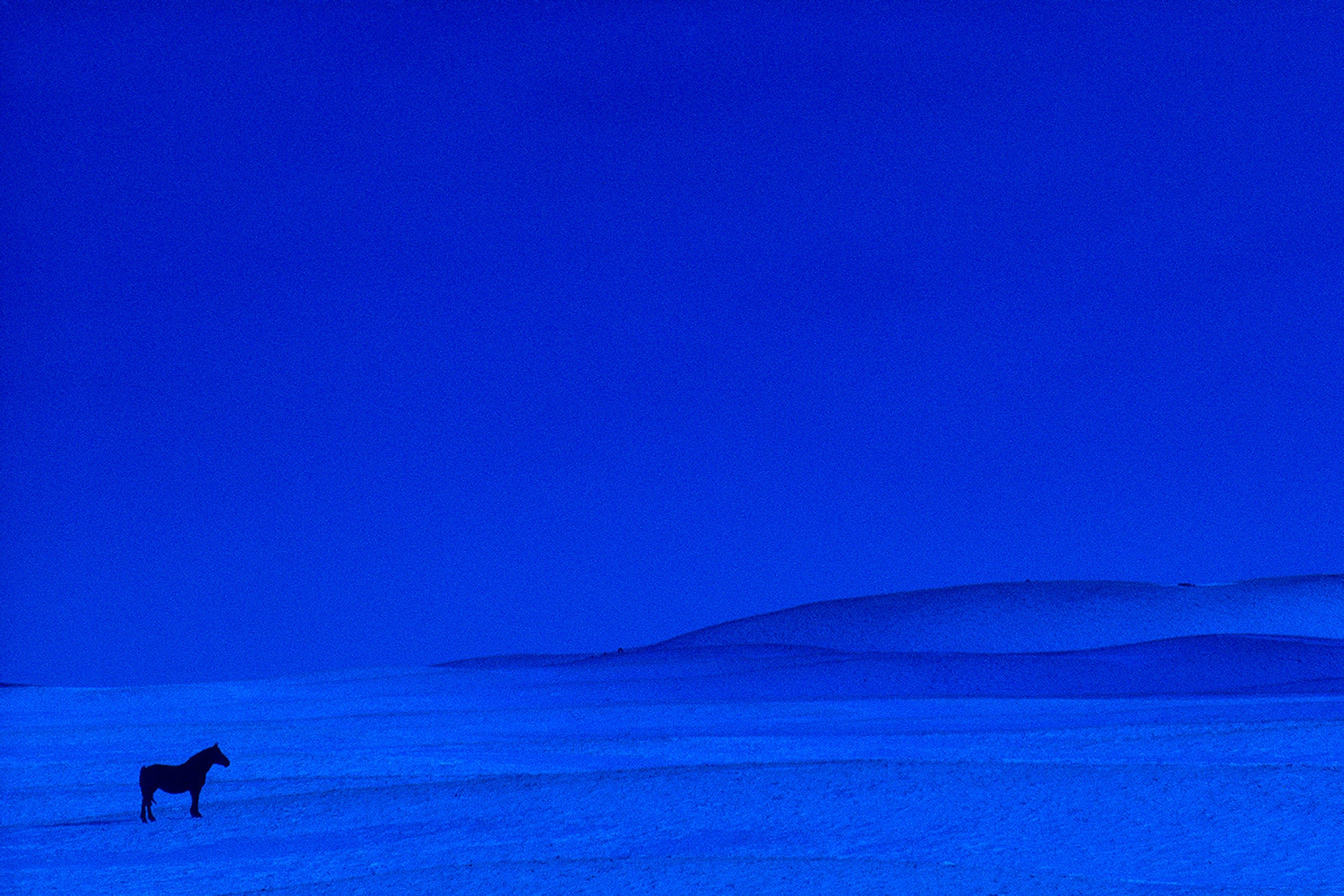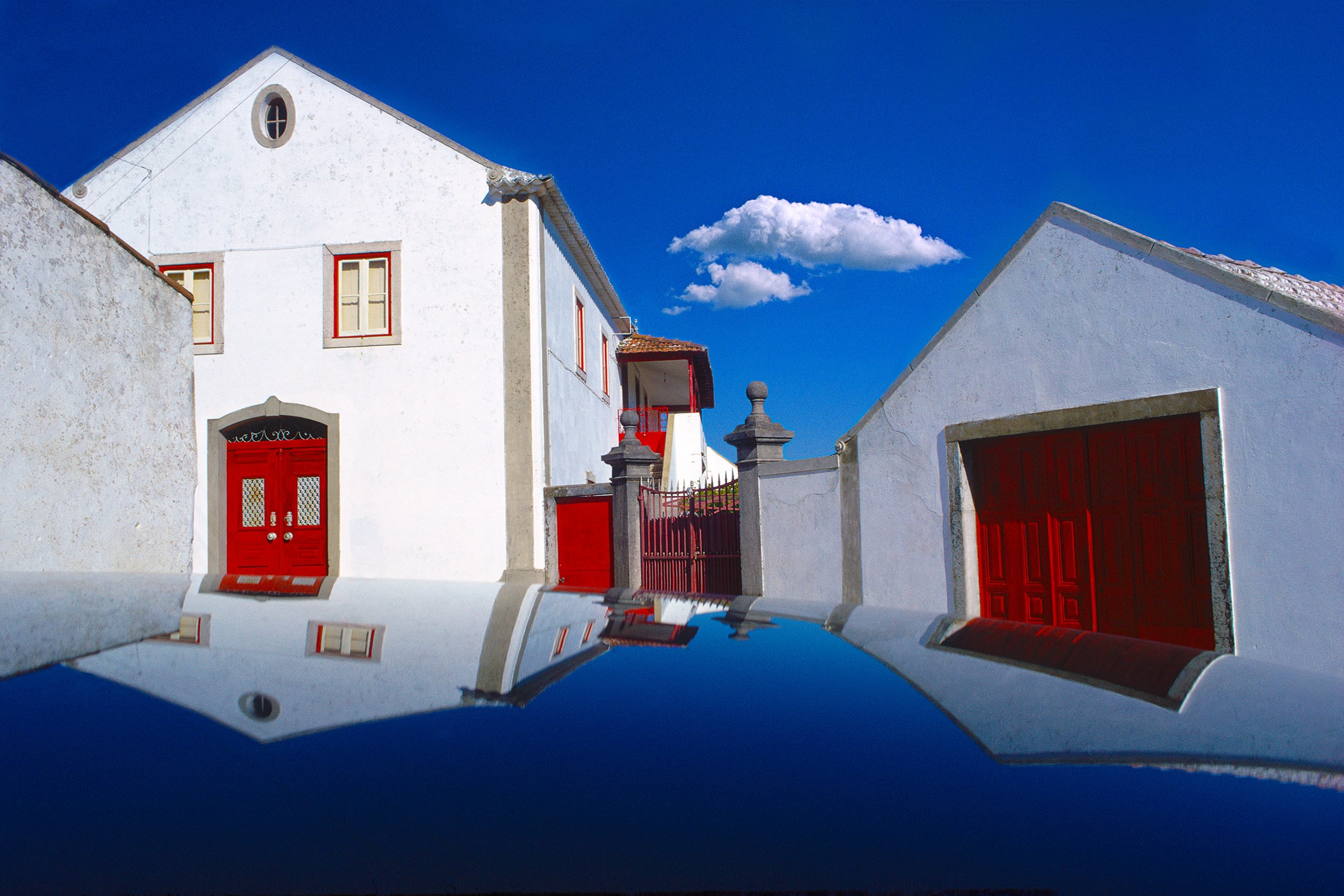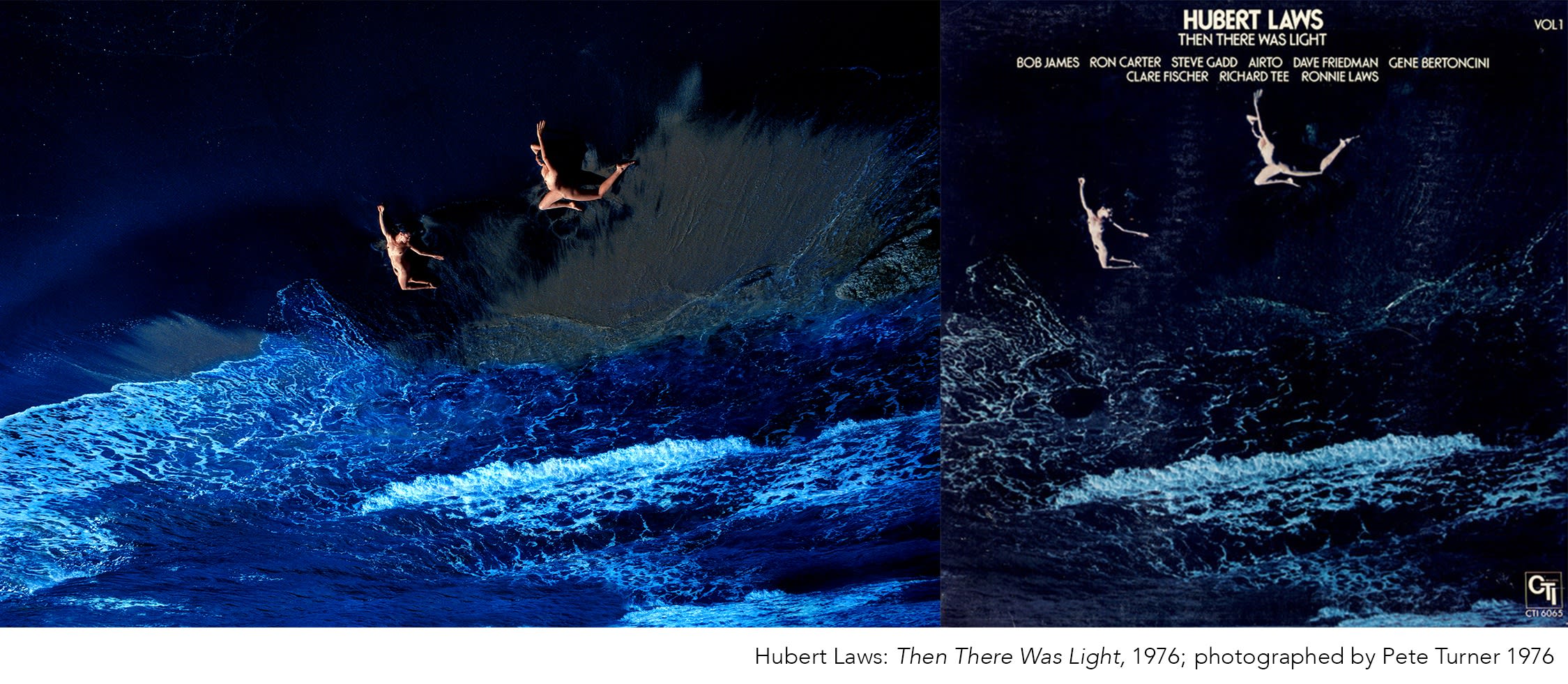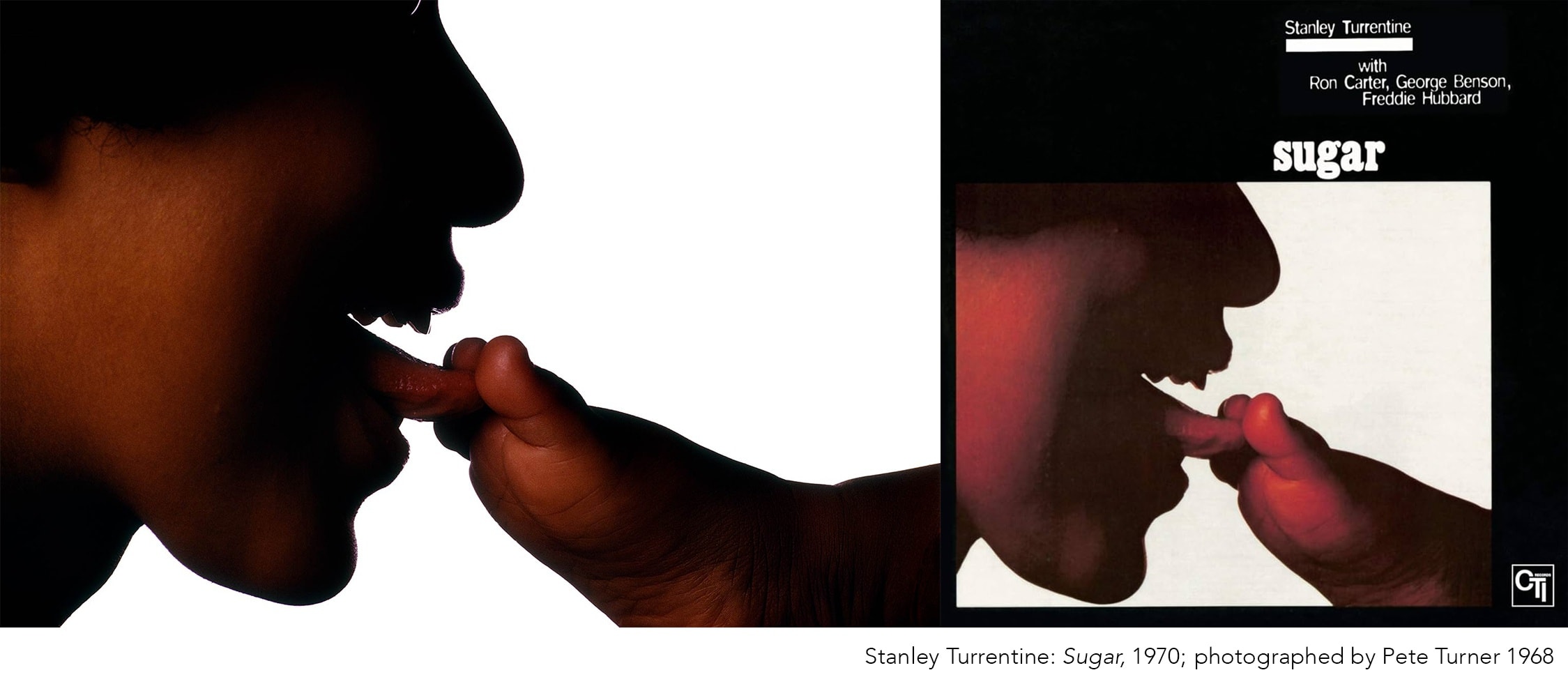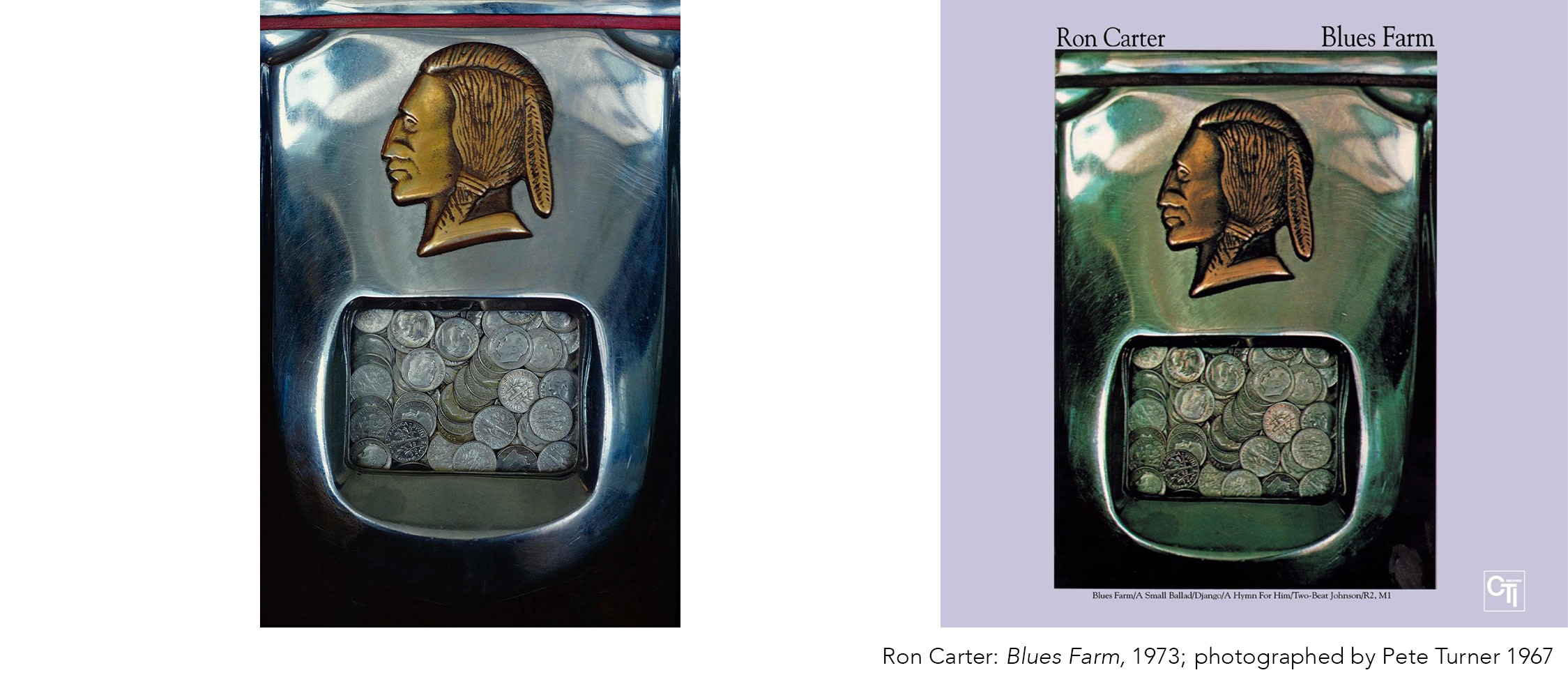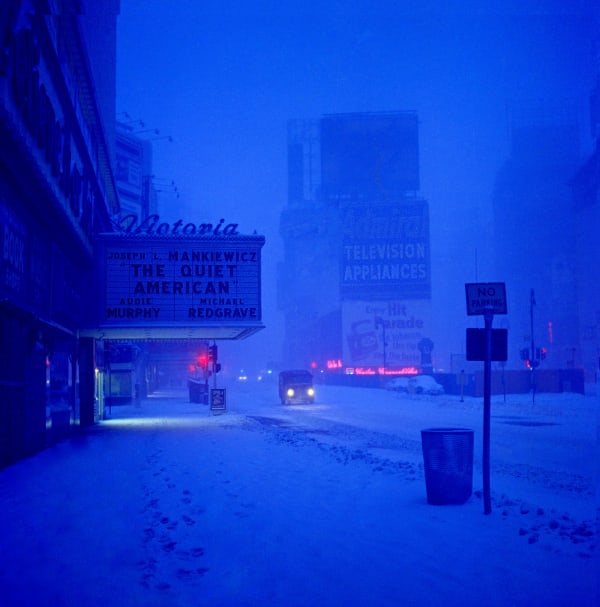-

Pete Turner (1934-2017)
Giraffe, 1964
Signed, titled, dated, and numbered on recto
Archival pigment print, printed c. 2000
20 x 30 in (50.8 x 76.2 cm), Edition of 25 plus 3 artist's proofs (#7/25)
-

-
"In 1967 Creed Taylor left verve for a two-year stint producing jazz titles for A&M under the CTI imprint and immediately signed the famed brazilian songwriter who helped birth the bossa nova crazed a few years before. The image had already seen success by the time it was used on the album. I had this image of a giraffe with its legs in a perfect stride from a 1964 trip to kenya. But I didn't like the background, which was flat and colorless. Using an optical printer, I added color as a graphic element. It was outrageous for a time when a normal use of color was the rule but it worked and as controversial as it was, the red giraffe was selected for the photography in the fine arts exhibition at the metropolitan museum of art in 1967. The same year, the giraffe debuted as an album cover. Four years later, the album was reissued but a last minute printing gaffe transformed the red backdrop into a lush, verdant sky. At first I was horrified when I saw it printed green but I've come to accept it." - Pete Turner et al., The Color of Jazz (New York: Rizzoli, 2006), 31.
-

Pete Turner (1934-2017)
Blue Horse, 1961
Signed, dated, titled, and numbered on recto
Archival pigment print
20 x 30 in (50.8 x 76.2 cm), Edition of 10 (#6/10)
-

-
The very first album on CTI Records, the independent label Creed Taylor established after leaving A&M is noteworthy for two further reasons: it was supposed to have been a Stanley Turrentine date and it featured the first version of the Beatles “Let it Be”. The Melancholy in the title reminded Turner of a late afternoon in snowy Montana when he had come across a lone horse walking in a field.
"This is one of the very few times the subject of the image ended up on the back cover, to the left of the fold–which isolates it even more. The alternate shot of the horse standing still is my favorite." - Pete Turner et al., The Color of Jazz (New York: Rizzoli, 2006), 57.
-

Pete Turner (1934-2017)
A Day in the Life, 1963
Signed with embossed artist stamp on recto
Unique dye transfer print, printed c. 1963
30 x 40 in (76.2 x 101.6 cm)
Framed: 38 x 48 1/8 in (96.5 x 122.2 cm)
-

-
“I used to be a smoker. One morning, in my bachelor days, I woke up and looked at the ashtray by the bed full of butts from the night before. It had been a long night: my girlfriend and I had broken up. I saw those filtered butts with lipstick, and it summed up the way I felt […] I had recommended Sam Antiput, a friend and art director at Esquire, to Creed to create the album design. Sam came up with the double-image layout that we used many times. Creed and I liked it because it allowed us to include a mood image and a portrait, and to make those albums stand out in the jazz bins.” – Pete Turner et al., The Color of Jazz (New York: Rizzoli, 2006), 22.
-

Pete Turner (1934-2017)
Rolling Ball, 1960
Signed, titled, and dated on recto
Archival pigment print
13 x 19 in (33 x 48.3 cm), Edition of 25 plus 5 Artist's proofs (#10/25)
-

-
An overlooked gem that paired the young vibraphonist Dave Pike, fresh from working with Herbie Mann, with pianist Bill Evans, who had most recently been a sideman with Miles Davis. The music falls into a standard hard-bop feel, but the image used on the cover was a breakthrough for Turner. “Rolling Ball was shot just after New Year’s 1960, during my first trip to Africa. I was crossing the Nubian desert when it was getting to be sunset in this small town, and I saw this railroad hut with a triangular roof. I noticed that by walking behind it, I could look through my viewfinder and move the sun wherever I wanted: on top of the roof, alongside it. “Suddenly I realized that photography was not just finding pictures, but making them happen.” - Pete Turner et al., The Color of Jazz (New York: Rizzoli, 2006), 19.
-

Pete Turner (1934-2017)
Boat Wake, 1966
Signed, titled, and numbered on recto
Archival pigment print, printed c. 2000
20 x 30 in (50.8 x 76.2 cm), Edition of 10 (#7/10)
-

-
Just a decade after helping Miles Davis craft his masterpiece Kind of Blue, Evans was a major influence on modern jazz piano, having forged a classical approach that melded sensitivity, intelligence, and lyricism. His second appearance in Montreux, Switzerland, at the leading European jazz festival had been triumphant, eclipsing his debut two years before, and the recording begged release with a suitably moody cover. Though Montreux lies on the shore of Lake Geneva, the image was shot in Norway. “You only get reflections like that in a fjord where the light enters from directly above. I was on this boat that was going ‘putt, putt, putt’ and I looked back and the sound was being replicated in the wake. This was actually shot late morning. I used a cool filter to accentuate the water aspect. Most people don’t know what they’re looking at, just that they like it.” - Pete Turner et al., The Color of Jazz (New York: Rizzoli, 2006), 54.
-

Pete Turner (1934-2017)
Moon's Moon, 1964
Signed with artist stamp on recto
Edition stamp on verso
Dye transfer print, printed c. 1976-1980
6 x 9 in (15.2 x 22.9 cm), Edition of 50 (#27/50)
-

-
Another foray at matching a strong, lyrical solo voice with orchestral string backing that worked. Another image caught in the Libyan desert, near an oil refinery.
“Remember that shot of the flames licking the moon? This is the other side. I simply turned around, and there’s this glow from the gas fires lighting up a small desert hill with a bunch of rocks on top. This album came out during the time when all the moonwalks were taking place, so the idea that this might be a moonscape was in people’s imagination” - Pete Turner et al., The Color of Jazz (New York: Rizzoli, 2006), 70.
-

-

-
From nineteenth-century Vienna to a 1968 cinematic milestone to a Grammy–winning Top Ten hit in 1972. That’s the path taken by Richard Strauss’s epochal “Thus Spake Zarathustra,” employed to great effect in the film 2001: A Space Odyssey, then imagined with a proto-disco beat by Deodato. Its success was international. “I was in Europe the summer in ’72, and it was playing everywhere. And I saw the album everywhere too. That tree is from the famous ruins in Zimbabwe. I put a strip of black tape at the bottom to get a sharper line parallel to the shadow of the tree trunk, and I made it green to bring life back into it. - Pete Turner et al., The Color of Jazz (New York: Rizzoli, 2006), 79.
-

Pete Turner (1934-2017)
Night Train, 1961
Signed, titled, dated, and numbered on recto
Archival pigment print, printed c. 2000
20 x 30 in (50.8 x 76.2 cm), Edition of 10 (#8/10)
-

-
A master pianist in his usual trio setting covering blues and R&B standards: that was the winning formula behind this Taylor production for Verve. By chance, a photographic journey Turner had proposed a few years before had captured the perfect hard-driving image. “Harold Hayes was the editor at Esquire magazine in the ‘60s—a warm, open-minded kind of guy. It was easy to make an appointment in those days, and I went up there and he asked me if I had any ideas for a photo essay. ‘What would you like to shoot?’ he said. ‘Harold, I’d like to take a train around the U.S.’ ‘Great. We’ll call the essay “Pavane for the Iron Horse.”’ “I’d get off at different stations and take hots of what I saw, including trains coming and going, like this one: tight shots, blurred motion. Just trying to capture the feeling.” - Pete Turner et al., The Color of Jazz (New York: Rizzoli, 2006), 21.
-

Pete Turner (1934-2017)
Zip, 1973
Signed, titled, dated, and numbered on recto
Archival pigment print, printed c. 2000
20 x 30 in (50.8 x 76.2 cm), Edition of 10 (#10/10)
-

-
Another solid outing from the saxophonist/flutist known for mixing commercial material with adventurist avant-garde detail-as on the thirteen-minute version of Stevie Wonder’s “Too High” featured on this album. One look at the cover brings a proud smile to Turner’s face.” We were really on the cutting edge of everything. We had a great time at CTI, and we gave ourselves complete freedom with these covers, beyond even considering the album title. That was a great feeling! I had been working for Triumph Motorcycles. During a break, I asked the motorcyclists to do a few runs and I tried using a slower shutter speed, as I had done with the cheetah in the bamboo grove. My favorite is the outtake [above].” - Pete Turner et al., The Color of Jazz (New York: Rizzoli, 2006), 97.
-

Pete Turner (1934-2017)
Portugal Dream, 1966/2014
Signed, titled, dated and numbered on recto
Archival pigment print, printed c. 1000
13 x 19 1/2 in (33 x 49.5 cm), Edition of 17 plus 4 Artist's proofs (#15/17)
-

-
“Recorded and released the same year the renowned guitarist died, this album was another instance of Taylor providing only a title to work from. I remembered this photo of two houses in Portugal, reflected in a car roof, but where you can’t see the ground.” – Pete Turner et al., The Color of Jazz (New York: Rizzoli, 2006), 31.
-

Pete Turner (1934-2017)
Cheetah, 1964
Signed, titled, dated, and numbered on recto
Archival pigment print, printed c. 2000
30 x 20 in (76.2 x 50.8 cm), Edition of 10 (#6/10)
-

-
Efforts at fusing jazz and classical music abound, but not all find the necessary balance of restraint, color, and swing. This foray by flutist Laws, interpreting themes by Debussy, Stravinsky, and Bach, achieved both poise and passion. The album title suggested the call of the wild, and Turner had just the photograph. “We were coming back to camp from Amboseli National Park in Kenya. We drove through this bamboo grove, and this cheetah was walking parallel to our path. I grabbed a 105mm lens- a small telephoto- and was able to shoot two rolls of film. I was lucky and got a very special image.” - Pete Turner et al., The Color of Jazz (New York: Rizzoli, 2006), 57.
-

Pete Turner (1934-2017)
Road Song, 1967
Signed, titled, dated, and numbered on verso
Archival pigment print, printed c. 2000
13 x 19 in (33 x 48.3 cm), Edition of 25 plus 5 Artist's proofs (#17/25)
-

-
"I had to do a job in Kansas City– boring museum shoot of Chinese artifacts—and I looked out of the plane when I was landing and saw this freshly painted picket fence that went on forever. The first chance I got I left the museum, waited till dusk when the sky had that great blue color, and photographed the cars coming and going. What I really liked was the glow of the taillights–a splash of red and the fence forming a terrific perspective. Just a picket fence and brake lights: again, the suggestion of a road more than the road itself." - Pete Turner et al., The Color of Jazz (New York: Rizzoli, 2006), 31.
-

Pete Turner (1934-2017)
Cannonball, 1970
Signed, titled, dated, and numbered on recto
Dye transfer print, printed c. 1976-1980
6 x 9 in (15.2 x 22.9 cm), Edition of 50 (#30/50)
-

-
This recording, interpreting two pop songs and three classical compositions, established Laws on the jazz scene. The enigmatic cover, with its dreamlike black-hole-at-dusk, added mystery and emotion. “I’m in Mozambique and my driver wants to take me to this fort. I hate forts because they’re usually ugly, with cannons and cannonballs all welded together. But I go to this place and it’s beautiful – all whitewashed. I was leaning against a pile of cannonballs, and they moved! So I picked one up, put it on a ledge, and shot this image with a wide-angle lens.” - Pete Turner et al., The Color of Jazz (New York: Rizzoli, 2006), 62.
-

Pete Turner (1934-2017)
Bubble and Stripe, 1980
Archival pigment print, printed c. 2000
Signed, titled, dated, and numbered on recto
13 x 19 in (33 x 48.3 cm), Edition of 25 plus 5 Artist's proofs (#15/25)
-

-
Taylor’s last session with the great and troubled trumpeter provided him stellar company, performing tunes by Miles Davis, the Modern Jazz Quartet, and notably, Tchaikovsky. As ephemeral and evocative as Baker’s tone could be, a floating polychromatic bubble serves as an apt symbol.
“It’s a real bubble. We had to do a lot of testing and found if you focus on it and catch it just before it pops, you get these wonderful diffraction lines on the surface. We created a spectrometric light box out of Plexiglas with rows of colored gels below and above, and blew the bubble in between. So you are seeing not only two of the colors reflected in the bubble, you’re also seeing other colors from out of frame-like yellow and green. I don’t think anyone has done this before or since.” - Pete Turner et al., The Color of Jazz (New York: Rizzoli, 2006), 138.
-

Pete Turner (1934-2017)
Flying Women, 1976
Signed, titled, dated, and numbered on recto
Archival pigment print, printed c. 2000
13 x 19 1/2 in (33 x 49.5 cm), Edition of 25 plus 5 Artist's proofs (#11/25)
-

-
“It’s an interesting picture because if you turn the image upside down you see that the women are just lying on the beach! Polaroid was introducing their SX-70 camera and sent me to a destination of my choice. I picked the island of Dominica, where they have black-sand beaches, virtually untouched territory. I noticed one of the exposed polaroids from a different angle and the models looked like they were flying. I had my regular camera with Kodachrome in it, so we set up this shot with that in mind, and it worked incredibly well.” - Pete Turner et al., The Color of Jazz (New York: Rizzoli, 2006), 125.
-

Pete Turner (1934-2017)
Electric Earring, 1970
Signed and dated on recto, stamped and numbered on verso
Dye Transfer Print, printed c. 1976-1980
6 x 9 in (15.2 x 22.9 cm), Edition of 50 (#13/50)
-

-
Farrell was one of many saxophonists shaped by John Coltrane’s enduring style and unfettered approach. That Coltrane’s drummer Elvin Jones was featured on Farrell’s second CTI album emphasized the influence (keyboardist Chick Corea and percussionist Airto Moreira, both fresh from stints with Miles Davis, were also in the ensemble). A profile of Masai in traditional headdress and ear loops seemed as iconic and grabbing as the music. “On a safari in Kenya, I went to a small town called Namanga and asked people to come and sit for me. Harold Hayes, who was with me, said it would be interesting to photograph the ears of the tribespeople. They call them God’s ears, a blessed part of the anatomy.”- Pete Turner et al., The Color of Jazz (New York: Rizzoli, 2006), 70.
-

Pete Turner (1924-2017)
Licking, 1968
Signed and dated on recto, stamped and numbered on verso
Dye transfer print, printed c. 1976-1980
6 x 9 in (15.2 x 22.9 cm), Edition of 50 (#18/50)
-

-
“That’s a baby’s foot. Look magazine asked me to do a photo essay on the beauty of being black. I love shooting the rich dark tones of the skin. Will Hopkins was the art director who laid out the essay. We did this at the studio against a white background. The image on the back cover was the same mode, showing the beauty of the soul. - Pete Turner et al., The Color of Jazz (New York: Rizzoli, 2006), 63.
-

-

-
“How this image ties into Blues Farm beats the hell out of me. We had reached the point where we said, ‘the heck with being constrained by any titles.’ I was in Nevada and went to this gas station and there was a beautiful slot machine. I couldn’t believe my eyes -it had this great profile of an Indian, above a bunch of Roosevelt dimes.” - Pete Turner et al., The Color of Jazz (New York: Rizzoli, 2006), 89.
-

-

-
Brazillian percussionist Airto Moreira had earned both a high profile and respect after playing with Miles Davis and the groundbreaking fusion groups Weather Report and Return to Forever. His talent at manipulating a wide selection of shakers, tambourines, bells, whistles, drums, and the squeaky, voice-like guiga made the name of his first group and the title of his debut album a natural choice. “I was in India and there were people dying fabric right by the road. I saw this dyer with bright red hands, stopped the car, and asked if I could take a photograph. Just as I got all set and focused, this fly landed on his palm. I couldn’t have asked for a better moment.”- Pete Turner et al., The Color of Jazz (New York: Rizzoli, 2006), 88.
-

Pete Turner (1934-2017)
Shape of Things to Come, 1969
Signed with embossed artist stamp on recto
unique Dye Transfer print, printed c. 1969
40 x 26 in (101.6 x 66 cm)
-

-
Unfair comparisons to Wes Montgomery were inevitable when Benson came to A&M the year after Montgomery died. But Benson was clearly his own man, as this groove-driven album proves. The link between title and cover image was more straightforward than usual for Taylor and Turner, yet enough mystery was evoked by the panoramas the photographer was able to create. “Shapes always play an important role in my work. We were renting a house out on Fire Island, and I had these shapes with me and a piece of weathered wood that had some texture to it. I had been waiting for a sunny day with nice clouds and then photographed this. I did it for fun. I was trying to portray a futuristic cityscape—and it worked.” - Pete Turner et al., The Color of Jazz (New York: Rizzoli, 2006), 36.
-

Pete Turner (1934-2017)
Eye to Eye, 1968
Signed, titled, dated, and numbered on recto
Archival pigment print, printed c. 2000s
13 x 19 in (33 x 48.3 cm), Edition of 25 plus 5 artist's proofs (#12/25)
-

-
“I still had a couple of these false eyes that I had used before. I kept wanting to place one where it would be shocking, in something that you could open up, like a jar or a can. After playing around with it, I got the idea of opening up a can of peaches, and the eyeball fit right in.” - Pete Turner et al., The Color of Jazz (New York: Rizzoli, 2006), 118.
-

Pete Turner (1934-2017)
Necking, 1973
Signed with embossed artist stamp on recto
Edition stamp on versoDye transfer print, printed c. 1973
6 x 9 in (15.2 x 22.9 cm), Edition of 50 (#24/50)
-

-
A top-notch album from the second half of the vibraphonist’s career, matching him with Hubbard’s spirited trumpet, the Hancock Carter-Cobham rhythm team, and Sebesky’s tasteful string arrangements. The tunes bounce between open and spacious—a mood-setting jazz soundtrack—and the more syncopated and Spanish-flavored title track. The cover stands as one of Turner’s most memorable. “I was on assignment for South African Airways. I loved the surreal quality of all the ostrich necks, and wanted to get them in front of a sunset. But it was a hard shot to get. I needed to get some people to herd them, and then all of a sudden it came together. But there was one small problem. On the album cover, the first ostrich on the left has no beak. That always bugged me. But after the advent of digital technology I was finally able to get the ‘shot’ I wanted.” - Pete Turner et al., The Color of Jazz (New York: Rizzoli, 2006), 98
-

Pete Turner (1934-2017)
Molten Steel, 1978
Signed, titled, dated, and numbered on recto
Archival pigment print, printed c. 2000s
20 x 30 in (50.8 x 76.2 cm), Edition of 10 (#5/10)
-

-
“I was in a steel foundry in Sweden. I noticed there were these cooling ingots stacked on top of each other and vibrant colors were coming out of them: golds, yellows, reds. The two people in the background were foundry workers just outside the room. It was bright and sunny behind the very dark interior, which helped the steel glow even brighter.” - Pete Turner et al., The Color of Jazz (New York: Rizzoli, 2006), 126.
-
More about Pete Turner


